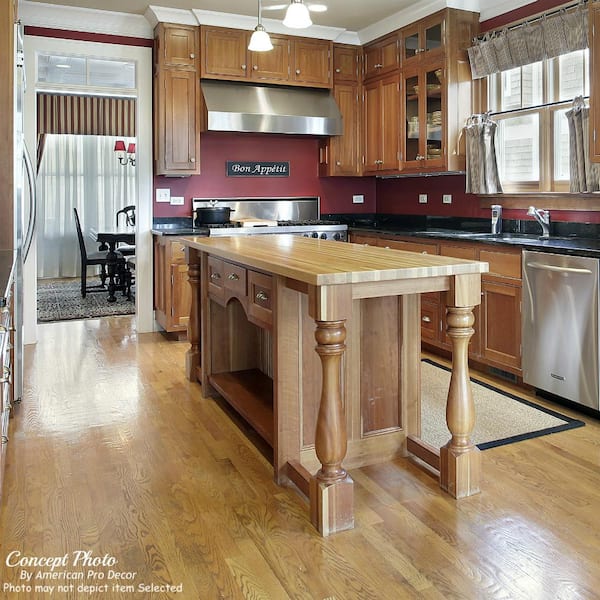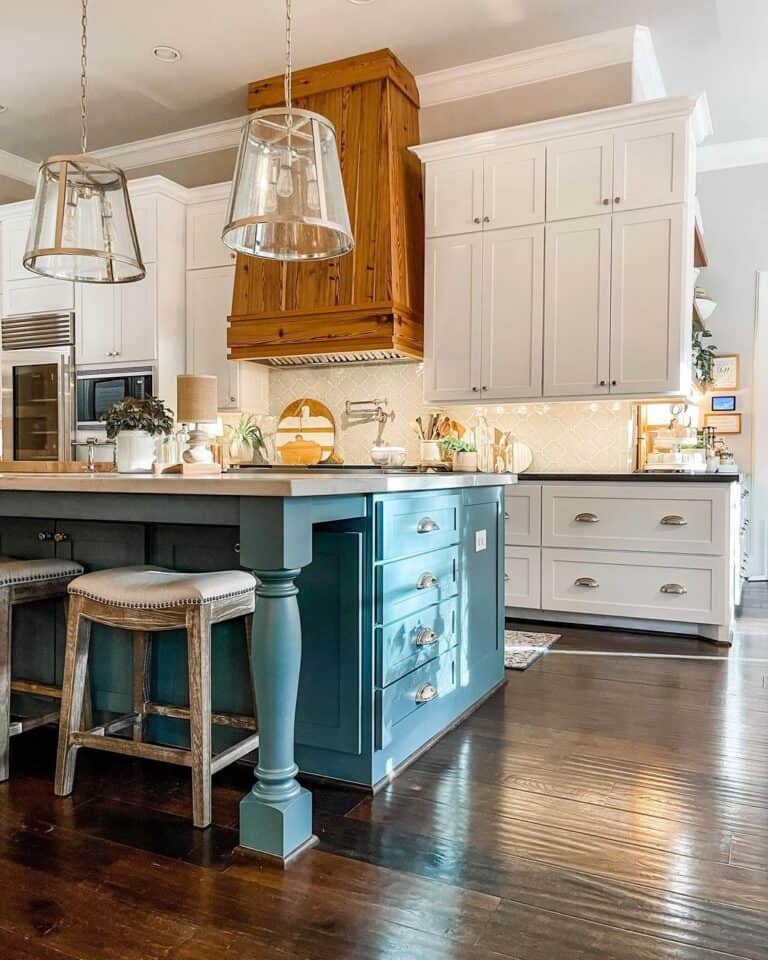Top Quality Kitchen Island Legs for a Sturdy Space Station
Top Quality Kitchen Island Legs for a Sturdy Space Station
Blog Article
Vital Tips for Selecting the Perfect Eating Table for Your Cooking Area
Picking the excellent table for your cooking area is even more than simply a matter of preference; it demands a comprehensive understanding of your space and needs. Begin by measuring your readily available room to make certain enough clearance for activity. The shape of the table plays a critical role; while rectangular tables match bigger areas, round ones foster affection, and extendable alternatives use versatility. Material selection is just as vital, with woods supplying sturdiness and glass lending a contemporary touch. Ultimately, the table should harmonize with your kitchen's aesthetics and accommodate your family easily. What various other factors might affect this crucial choice?
Procedure Your Area
Choosing the optimal dining table begins with a careful analysis of your offered space. This fundamental action guarantees that the table not only fits pleasantly within the room however also matches the general format and functionality of your eating location. Begin by measuring the measurements of the area, thinking about entrances, home windows, and any existing furnishings. This will assist you determine the maximum allowed size for your eating table.
Think about the flow of motion around the table. It is important to leave ample room for chairs to be taken out and for people to walk around the table without blockage. A basic general rule is to allow at the very least 36 inches of clearance from the edge of the table to the local wall or item of furniture. This ensures convenience of accessibility and comfort throughout meals.
Additionally, think of the number of people you generally amuse and whether you require added room for guests. Selecting an extendable table can offer flexibility, allowing you to fit differing varieties of diners. By precisely determining your space, you lay the groundwork for selecting a table that enhances both the visual appeals and functionality of your eating area.
Pick the Right Shape

On the various other hand, round tables are outstanding for smaller sized kitchens or intimate celebrations, as they promote conversation by permitting everybody to face each other. They additionally supply a feeling of coziness and can fit well in tighter areas because of their lack of sharp edges. Oblong tables provide the very best of both worlds, incorporating the length of rectangle-shaped tables with the intimacy of round ones, making them functional for various setups.
Square tables are another alternative, especially suited for square-shaped spaces. They produce a in proportion and modern-day appearance, cultivating an equivalent eating experience for all seated.
Product Factors To Consider
When selecting a dining table, material factors to consider are extremely important in identifying the table's sturdiness, maintenance demands, and general aesthetic. Timber is a traditional option, providing timeless allure and toughness.
Glass-topped tables give a modern-day, smooth look and can make an area appear bigger because of their transparency. They require constant cleansing to prevent spots and fingerprints. Additionally, toughened up glass is suggested for its added strength and security.

Last but not least, composite materials like MDF (Medium-Density Fiberboard) or plywood are affordable alternatives. These products can imitate the appearance of strong wood but may not offer the same durability. They are normally less complicated to tidy but can be susceptible to water damages if not properly secured.
Eventually, the choice of product must align with your cooking area's design, your way of living needs, and your spending plan constraints. (kitchen island legs)
Seating Ability and Comfort
Just how do you figure out the best seating capability and convenience for your table? This important action includes assessing both the physical room available in your kitchen and your home's functional requirements. Begin by measuring your kitchen location to ensure the table fits easily, enabling a minimum of 36 inches of clearance around it for very easy movement. Take into consideration the number of individuals who normally dine with each other, as this will affect the table size. For a family members of four, a rectangular table of 48 inches long or a round table with a 48-inch diameter is normally sufficient.
The height of the table need to ideally be around 30 inches, offering a well balanced ergonomic position for seated restaurants. Chairs need to have a seat height of 18 to 20 inches to check this site out make certain a comfortable eating stance.
Design and Visual Appeal
Choosing go to my blog a table that matches your style and aesthetic appeal includes balancing individual preference with the existing style of your dining space. The eating table is typically the focal point of the cooking area, and its layout needs to match the total style of the space. Whether your kitchen flaunts a modern, minimal look or a rustic, farmhouse appeal, the table you pick need to integrate with these elements to create a cohesive and welcoming atmosphere.
Think about materials carefully; timber provides a classic appeal and can vary from abundant mahogany for a conventional seek to lighter oak for a contemporary feeling. Metal and glass tables, on the various other hand, can present a smooth, industrial edge to your cooking area. Do not neglect the table's form-- rectangular tables are timeless and functional, while round and oval alternatives can foster a more intimate dining experience.
Additionally, pay very close attention to details and surfaces. A troubled coating could include character and heat, whereas a glossy surface can add to a tidy, modern visual. Eventually, your table ought to not only in shape flawlessly into your cooking area's layout however also reflect your personal design, boosting the space both functionally and visually.
Verdict
To conclude, choosing the ideal table for a kitchen area requires careful analysis of area, shape, material, seating capability, and visual harmony. Making sure a minimum clearance of 36 inches promotes comfy movement, while the option of form improves spatial dynamics. Material selection influences longevity and style, making it critical to straighten with the cooking area's overall aesthetic. Ultimately, a well-chosen eating table promotes a welcoming environment and suits the house easily, thus improving the eating experience.

When choosing an eating table, product considerations are critical in establishing the table's durability, upkeep needs, and total visual. For a household of Extra resources four, a rectangle-shaped table of 48 inches long or a round table with a 48-inch size is usually sufficient.
Do not neglect the table's shape-- rectangle-shaped tables are classic and versatile, while round and oblong alternatives can promote a much more intimate dining experience. kitchen island legs.
Report this page